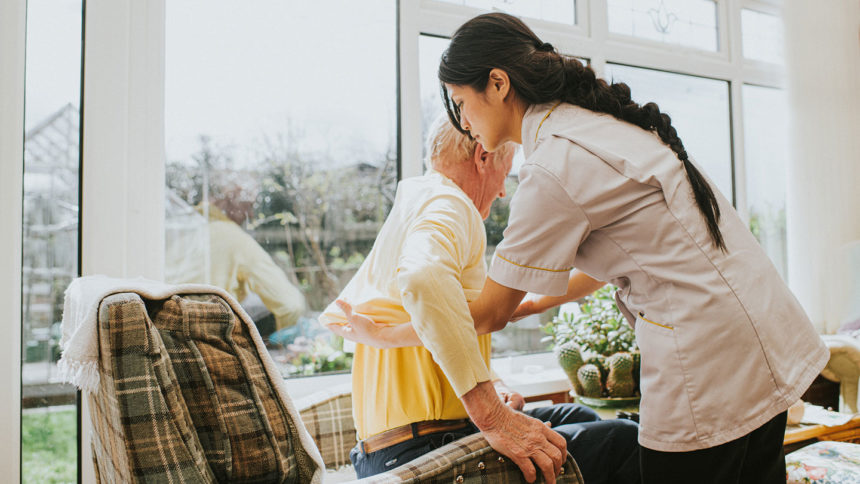
Data already at worker’s fingertips can accurately predict patients’ fall risk and help nursing home caregivers better target prevention strategies.
Staff turnover is at an “extreme high,” which can impede the ability of frontline workers to quickly identify residents most likely to suffer falls. That makes standardized assessment tools even more useful, according to developers of one such tool who outlined their approach today in the Journal of the American Geriatrics Society.
“Communication between the direct care staff, who know the patient best, and the providers who order interventions is generally limited, and this is a barrier to implementing quality improvement initiatives in the [nursing home],” the study said.
The INJURE-NH tool developed by the nine-member academic team can be used to enhance clinical care through automated model calculations based on data that staff compile in the Minimum Data Set. However, the study noted that many facilities have “limited” IT infrastructure, making it “preferable” for the Centers for Medicare and Medicaid Services to modify resident assessments to allow automated calculations.
INJURE-NH looks beyond existing models that focus on hip fractures, since those injuries comprised fewer than half of all fall-related injuries, the researchers wrote. The new model uses nine essential predictors to more accurately assess six-month and two-year fall risk for all nursing home residents.
The “core predictors” that caregiving teams can use to predict patients at higher risk of falls are: gender, age, visual impairment, cognitive impairment as measured by the Cognitive Function Scale, ADLs, orthostatic hypotension, diabetes, history of hip fracture and recent falls.
The study cohort was composed of all nursing home residents in the US from Jan. 1, 2016, to Dec. 21, 2017, who had a residency of more than 100 days and fewer than 10 consecutive days outside of the facility. Comorbidities were “common,” the research noted with 58.3% of individuals diagnosed with dementia and 45.7% determined to have moderate to severe cognitive impairment. During the six-month and two-year follow up evaluations, more than 72,000 of the 733,427 residents included in the study experienced at least one fall-related injury with hip fractures being the most common followed by non-hip femur fracture and intracranial bleeding.
Approximately half of nursing home residents suffer falls each year, and 10% to 25% of those falls can result in fractures or concussions, the report notes. Fall-related injuries are a significant cost to the US health system, making up 6% of annual Medicare spending. The one-year mortality risk in the year after suffering a hip fracture is 40%, per the study.
According to the study, residents with bladder control and the ability to move freely around their rooms had a greater risk factor for fall-related injuries. However, the study noted that limited movement results in other consequences.
“While facilities that discourage locomotion may have fewer [fall-related injuries], such practices are not recommended as they lead to declines in other functional and cognitive domains,” wrote the authors, led by Matthew S. Duprey, PharmD, PhD, with Brown University School of Public Health and the University of Kentucky College of Pharmacy.
The research team also featured experts from Hebrew Senior Life; the Providence, RI, Veterans Affairs Medical Center; and Beth Israel Deaconess Medical Center and Harvard Medical School.



